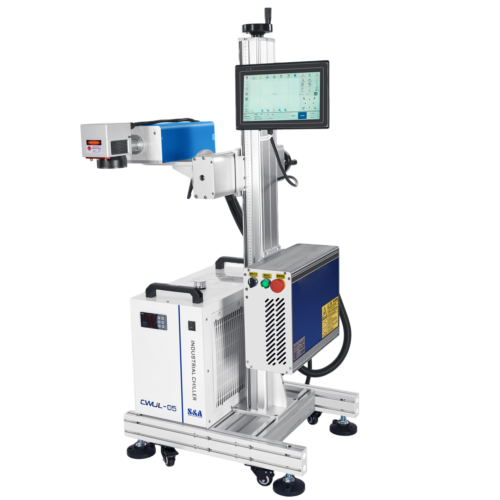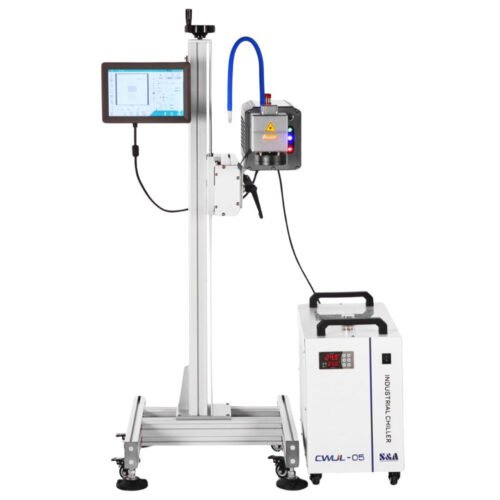Flying UV Laser Marking Machine
When we need a marking equipment, often do not know what kind of marking method is appropriate for their products, Flying UV Laser Marking Machines as a non-contact remote recognition technology, can be engraved on a variety of products with high-quality barcode, two-dimensional code, batch number, text and trademark information.
Flying UV Laser Marking Machine
Flying UV laser marking machine use ultraviolet light, typically at a 355 nm wavelength, to mark or process materials. This wavelength, about a third of the typical fiber, allows the UV laser to do things that no other laser marker can. The shorter wavelength delivers significantly higher absorption and a much smaller beam spot. This allows for high contrast and damage-free marking on metals and plastics, as well as the ability to mark smaller or more precise parts. This makes it an ideal solution for heat-sensitive materials or parts requiring precision that typical fiber lasers cannot achieve.
Why Choose UV Laser Marking?
Manufacturers across the globe use UV laser marking due to its precision and ability to work on sensitive materials. The shorter wavelength (often 355 nm) allows UV lasers to create detailed, high-contrast marks on materials like plastics, ceramics, and glass without causing heat damage. Using a UV laser marking machine allows for minimal material alteration, which is especially important for marking items like microchips or delicate medical devices.
UV laser markers are the best option for marking materials that reflect longer wavelengths when compared to other laser technologies. They excel at creating clear, high-contrast marks on transparent or highly reflective surfaces. In contrast, other lasers, such as infrared or CO2, struggle to achieve the same level of precision without causing damage.
The precision offered by UV laser technology also ensures that barcodes, logos, and detailed product information can be clearly marked, even on the smallest components. One final reason UV lasers are often chosen is that they operate at higher speeds. Production efficiency, while maintaining the quality and durability of the markings, is easier to achieve.



